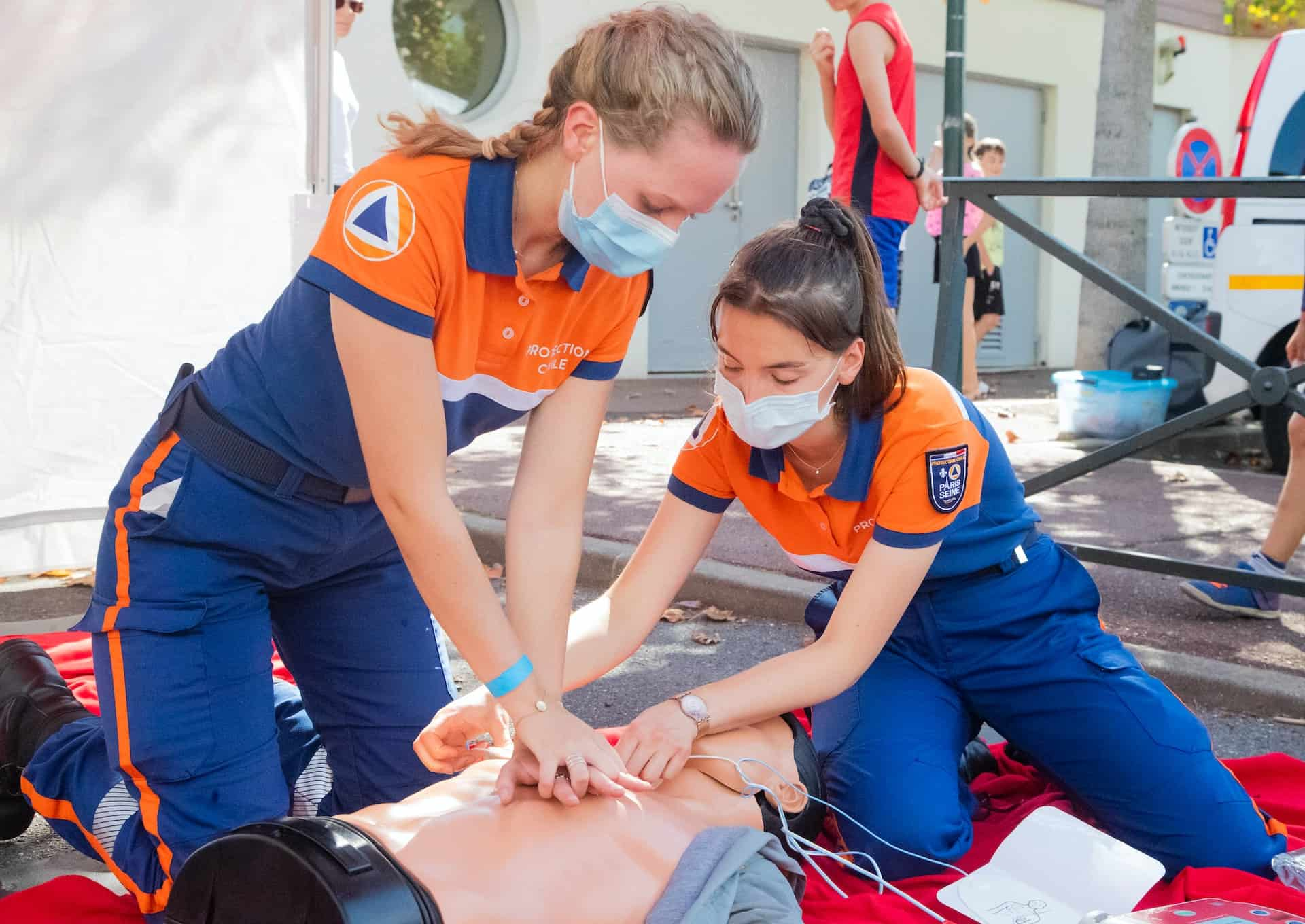Would you know what to do if someone around you went into cardiac arrest? Knowing Cardiopulmonary Resuscitation (CPR) can save lives and it's also quite an accessible course if you want to learn. Now, is using a defibrillator the same as CPR? An automated external defibrillator (AED) is a portable device used to treat people suffering from sudden cardiac arrest (also known as SCA) by delivering a shock through the chest wall.
CPR is a crucial step in saving the life of someone who has gone into cardiac arrest. It helps maintain blood flow through the heart, allowing for the possible delivery of oxygenated blood to the brain.
An AED, also called a defibrillator, can save lives as it is designed to analyze and treat sudden changes in heart rhythm, not only resulting in increased survivability of patients, but also reducing functional impairment from the effects of SCA.
Although the intention of both is to save someone's life, there are considerations to take into account which can make one a better option than the other in certain situations.
When Should You Use CPR?
When should you use CPR? CPR is a lifesaving course of action that should be performed during several emergency medical events—including a heart attack or sudden cardiac arrest. During a cardiac arrest, the heart stops beating and blood flow to the brain stops (causing a lack of consciousness or responsiveness). Without this oxygen-rich blood flow, the brain can be severely damaged after a few minutes.
There are 4 main steps to CPR, that you can safely perform if you have been appropriately certified:
1. Call 911
Ask the operator to alert the local emergency medical services team and request an ambulance: If a person is without pulse or without signs of circulation, such as a pale or bluish skin color, coughing, or making irregular sounds, or if you are unsure if the person is breathing — go ahead and call (this step does not require certification).
2. Place The Person Onto Their Back
Turn them onto their back using a gentle motion. They should be positioned so that their head is facing up and their shoulders are flat on the ground (or floor). Keep the person's neck in line with their spine.
3. Perform Chest Compressions
Using the palms of your hands, press down on the center of their chest between each breastbone. This should be done quickly and firmly at least 100 - 120 times per minute until help arrives.
4. Give Rescue Breaths And Check For Responsiveness
Inhale deeply, then put your mouth over their nose and exhale with enough pressure to make their chest rise, 2 rescue breaths should be administered per 30 compressions.
CPR keeps blood flowing to the brain and other organs until emergency medical assistance is provided, such as defibrillation, which can be provided by a medical professional or a normal bystander. You can learn CPR by taking a course through a certified organization.
When Should You Use An AED?
If a person's heart suddenly stops beating or they are experiencing SCA an AED should be used as soon as possible. The symptoms of SCA can appear as the following:
-
No detectable breath or severely irregular breathing;
-
Victim is unresponsive;
-
Victim is unconscious; and
-
No detectable pulse in victim.
Application of an AED is one of the steps in the early treatment of cardiac arrest. The AED is used to see if a person's heart can be shocked back into a normal rhythm. If the AED shows that a shock is needed, it gives direction on timing and placement of the paddles, or electrodes.
Remember that CPR should be performed if the patient is unresponsive and not breathing, if there is an AED available it should be used in conjunction with CPR. If the AED does not bring the patient back to consciousness then CPR should be re-administered.
The Takeaway
So, is using a defibrillator the same as CPR? The main difference between CPR and using an AED is that it takes little to no training to use an AED. You also don't need to worry about getting every step right because it is automated and will guide you through the process.
That said, an AED is still only an aid to CPR. You should try and perform CPR on the person in cardiac arrest until the paramedics can take over. Contact AED Advantage if you want to learn more about the life-saving benefits of using an AED.
